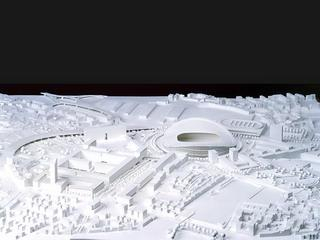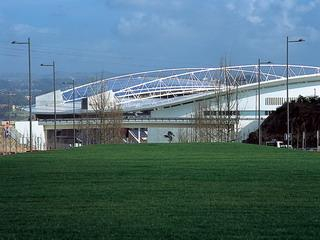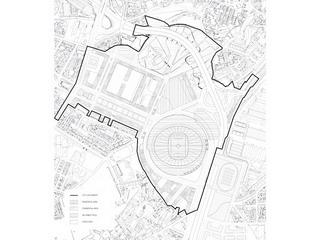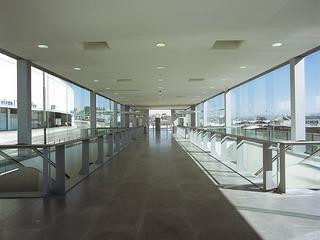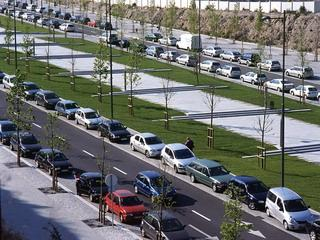Antas Urban Project
The Antas Urban Project falls upon an area that can be designated as an urban void of Porto partially occupied by old sport facilities, obsolete industrial units and abandoned interstitial spaces, delimited by a system of heavy infra-structures VCI (Internal Ring Road) and railways - that isolates it from the surrounding urban areas.
Taking the construction of a new stadium as starting point, a new central area was projected, taking advantage of the opportunity created by a major event - the Euro2004. Thus, it was a political decision that will rebalance the city s structure, through a town planning operation driven by the City Council.
An urban project is at stake integrating several valences, with a mixture of functions that assures it an intense fruition, also propitiated by a good accessibility, of both public and private transportations.
The "anchor" equipments will be the Stadium - of multiple valences -, a Shopping Mall, an administrative building - headquarters of a financial institution -, and a Hotel. There will also be a significant housing offer.
The orography of the land, the barrier effect provoked by the VCI and the Stadium s great visual impact, led to an urban drawing solution in which the reconstruction of the ground and the scales relationship were important.
The Stadium, with a perfect circle implantation, stands on a circular shaped square (plaza). This square is fitted in a sloping terrain, taking the natural land s quota to West and being over elevated to East. The level difference between the new ground and the natural land allowed the gain of wide areas for the subway station and public parking.
The main equipments are located around the Stadium and the circular plaza. The plaza is linked to the quarter of Antas through a boulevard, and to the east quarters by public spaces and green areas that tie the intervention area to the surroundings, making them participate in the life of the new centre and the equipments that vivify it.
The rigour put in the drawing in order to integrate buildings and volumes with such several scales reflected itself in the Stadium project that ended up half under the ground level and opened in the North and South tops, in the progressive decrease of the residential building s height as we approach the old Antas neighbourhood, and in the adoption of diversified solutions of isolated buildings and macro blocks, permeable at the ground level, with great collective green spaces in the interior.
Rebuild the over elevated ground, implant the Stadium in a circle with 280m of diameter, liberate the fourth part of the intervention area for an urban park (10 ha) and build a boulevard with the dimensions of Avenida dos Aliados (70 m of width) was the option, in what concerned the urban form, that seemed more appropriate to the project.
The urban project goes through scales as diversified as the viaducts or the subway station s macro-structure, to the wall s guard detail that also illuminates the pavement supporting it.


